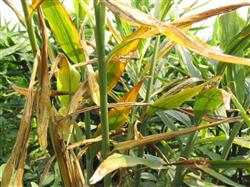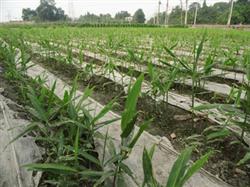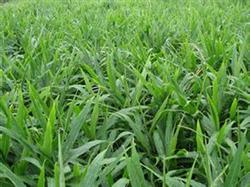Causes and Control of Rotting Ginger Seedling Death

Planting ginger is a better project for farmers to increase their income and become rich, but rotten ginger seedlings often die in production, and ginger farmers can not prescribe the right medicine to the case. Experts believe that there are several reasons for the death of rotten ginger seedlings. First, ginger blast disease is mostly caused by bacteria carried by seeds and soil, which is not kept up with the control. The preventive methods are as follows: 1. Sunning: after the ginger was harvested, the ginger was dried for a few days, and then treated under the condition of 20 ℃ ~ 30 ℃ for 7-8 days to promote wound healing and reduce the occurrence of ginger blast during storage. two。 Seed soaking: choose ginger which is fat and plump, bright skin color, fresh meat, hard texture and disease-free ginger. Before sprouting, soak the seeds with 0.2% borax + 0.5% potassium dihydrogen phosphate + 50% carbendazim 800x + disinfectant alum 800x + Tianda 2116 special 600x liquid mixture for 15 minutes. 3. Avoid continuous cropping: the root system of ginger is underdeveloped, the rhizome of continuous cropping is small, and it is prone to rot, so it should be rotated with rice, cruciferous and legume crops for 3-4 years. 4. Soil disinfection: soil disinfection is carried out by sprinkling 75kg of quicklime per mu during soil preparation. 5. Post-disease treatment: diseased plants were pulled out in time, and quicklime was applied in the acupoints. The whole field was filled with 500,600fold solution of disinfectant alum + Tianda 2116 special type of underground rhizome or 72% agricultural streptomycin. Strictly prevent irrigation water from diseased fields from flowing into disease-free fields. 2. Excessive fertilization and improper fertilization methods cause fertilizer damage some ginger farmers think that ginger is resistant to fertilizer, and the more fertilizer is applied, the higher the yield, so blindly re-apply chemical fertilizer, partial application of nitrogen fertilizer, centralized fertilization, and some even dry application of urea, compound fertilizer and so on. resulting in fertilizer damage, sesame foot ginger and serious rotten ginger seedlings. Ginger should mainly apply rotten farm manure. Generally, 3000 kg of rotten pig and cow manure, 30 kg of calcium superphosphate and 15 kg of potash fertilizer should be applied per mu during soil preparation, and once fertilizer should be applied when the seedling height is about 30 cm. 750 kg / mu of pig manure water When ginger seedlings were sent to 3 to 4 seedlings before and after the Summer Solstice, they were mixed with 50 kilograms of rotten withered cake and 300 kilograms of ash per mu, or 1000 kilograms of pig manure water was applied, and a layer of fine soil or soil residue fertilizer was applied after fertilization. before and after Greater Heat, 1000 kilograms of pig manure and 4 kilograms of urea were applied per mu. Third, the waterlogging damage caused by stagnant water in the field is mainly caused by the shallow tillage layer of the soil, the shallow drainage ditch and the impermeability of leaching sand after rain, and the death of rotten ginger seedlings caused by high temperature and high humidity. The preventive methods are as follows: 1. Dig ginger field 35 cm deep before frost; at the same time dig main ditch 55 cm 60 cm deep and side ditch 50 cm deep, so that the drainage is smooth, the rain stops the ditch is dry, and the planting ditch is free of stagnant water or dark stains. two。 Select loam and clay loam with deep soil layer, good air permeability, rich organic matter and strong water and fertility conservation, and avoid planting white sand soil which is easy to leach.
- Prev

How to water ginger in summer
Ginger has different requirements for watering in different growth periods. The bottom water must be thoroughly watered when sowing, and the first water is not started until the emergence of seedlings reaches about 70%. After watering this water, it is often necessary to keep the soil moist to prevent the soil surface from hardening and affecting seedling emergence. It is appropriate to irrigate small water in the early stage of seedling stage, and see you in the soil after pouring.
- Next

Ginger management should be scientific
Hedgerow shade gives rise to warm ginger, but is not resistant to strong light and heat. Therefore, after planting, corn stalks with a height of 70 cm and 80 cm were inserted 12 cm to the south of the ginger ditch and woven into a flower hedge, which was slightly inclined to the north by 10 degrees to 12 degrees, so that the surface of the ginger ditch was shaded to facilitate the growth of ginger seedlings. The fertilizer absorption of ginger is very strong in different stages, and the whole growing period is very strong.
Related
- Where is it suitable to grow horseradish in China? it is expected to see the middle altitude horseradish in Alishan.
- How to prevent tomato virus disease reasonably? (Control methods included)
- Many people like to plant towel gourd on the balcony. What are the main points of this method and management?
- What crops can chili peppers be mixed with?
- Fertilization techniques and matters needing attention in Tomato
- What are the grafting techniques for peach seedlings in spring?
- Harm and control methods of root swelling disease of Chinese cabbage
- What are the pests of sweet potatoes? How to prevent and cure it?
- Symptoms, causes and Control methods of navel Rot in Tomato
- The cause of "Cucumber rotten bibcock" in Farmers' planting Cucumber and its Control Plan

